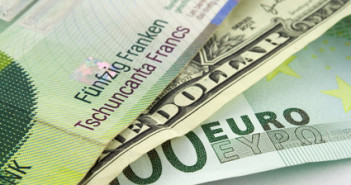The EUR remained pressured overnight as traders continued to react to comments made earlier in the trading day by Jean-Claude Juncker of Luxemburg. And yet, what he said did make sense. It’s just the way he said it. The appreciation of the EUR over the last few months is posing a threat to the European economy.
This is the same comment made by economists in Switzerland and Japan over the last few months. Too strong a currency does effect the ability to export and Juncker was merely making that point.
After the comments the EUR has fallen from just over the 1.3400 level to as low as 1.3260 in overnight trade. Traders were caught long and stop loss selling saw the single currency quickly retreat through support levels. Many economists have said that the way to grow through exports is to weaken the EUR. A lower EUR makes Euro=zone countries more competitive in the world market.
Technically, on an hourly basis the EUR has gone from overbought to oversold, so the likelihood of another rapid decline is small. I had said earlier in the week that economic news was going to be the trigger for the EUR direction and I still maintain that to be the case. Of course, currency markets are always subject to political comments and yesterday’s move is a textbook example.
I’d expect that we now enter a new trading range, with 1.3350 on the topside and 1.3220 the bottom. Technical support remains at 1.3250 and for the moment we may have run out of steam on the downside.
The Japanese Yen continued to strengthen ahead of the BOJ meeting on Monday and Tuesday, January 21-22. While traders fully expect an expansion of the stimulus program and a doubling of the inflation target to 2%, we may be seeing a “buy the rumor, sell the fact†scenario that is common ahead of crucial central bank meetings.
Technical support for USD/JPY is at the 87.45 level, followed by the 87.20 area, and resistance occurs at 88.25 and 88.60.
As traders moved out of the EUR overnight, the other “risk†currencies were affected as well. USD/CAD tested resistance at .9870 and is currency trading on the higher side of its overnight range. The AUD also tested resistance at 1.0580 before moving back towards the lower end of its trading range.
Who will make the next comment? It probably comes from the US. FED governors continue to comment about the FED’s quantitative easing program, but traders seem to be ignoring these comments. The capacity to enlarge the QE program is there, we are told one day, while we are also told there are possibilities given economic improvement of ending the latest round of easing sooner rather than later. Its no wonder that these comments have no effect on the markets.
Also overnight, the World Bank lowered their 2013 global growth forecast to 2.4% from a prior projection of 3.0%, but this was ignored as well.
For the time being traders are locked into any comments that may come from Europe as far as the EUR is concerned. There probably wont be much of that today. Look for the EUR to trade in the range mentioned earlier. It is still early in the year and traders aren’t about to over extend on position taking.
Further reading:Â Forex Analysis: AUD/USD Retreats from Strong Resistance



